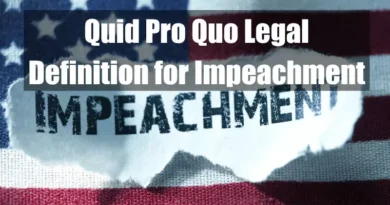Workplace Quid Pro Quo Harassment
Takeaways
| Key Points |
|---|
| Workplace quid pro quo harassment occurs when an individual in a position of authority demands sexual favors from an employee in exchange for work-related benefits, such as promotions, raises, or job security. |
| This form of harassment is explicitly prohibited under federal laws, including Title VII of the Civil Rights Act of 1964, which safeguards employees from discrimination based on sex. |
| Common examples include a manager offering a promotion in return for sexual favors, a supervisor threatening termination unless an employee complies with inappropriate requests, or a senior employee proposing better work assignments in exchange for a romantic relationship. |
| The primary factors contributing to this harassment are the power imbalance between supervisors and subordinates and workplace environments lacking clear policies against misconduct. |
| Victims often experience significant emotional and mental distress, including anxiety, depression, and decreased job satisfaction, which can adversely affect their performance and overall well-being. |
Introduction
Workplace quid pro quo harassment happens when a boss or someone in charge asks for sexual favors from an employee in exchange for something work-related. This could be a promise of a raise, keeping their job, getting a promotion, or avoiding punishment. The employee feels pressure because their job or benefits depend on doing what the person in power wants.
Unlike hostile work environments, quid pro quo harassment usually involves a clear trade-off, where the harasser uses their power to offer benefits or make threats about job decisions based on how the employee responds to sexual advances.
This serious offense is banned under federal laws, including Title VII of the Civil Rights Act of 1964, and can lead to serious consequences for both the victim and the employer.
What is Workplace Quid Pro Quo Harassment?

Legal Definition
Legally, quid pro quo harassment happens when someone in a position of power demands sexual favors or other improper exchanges in return for job benefits like promotions, raises, or job security. This type of harassment is illegal under Title VII of the Civil Rights Act of 1964, which forbids workplace discrimination based on sex, race, color, national origin, and religion.
Examples
Common examples of quid pro quo harassment include:
- A manager promising a promotion in return for sexual favors.
- A supervisor threatens to fire an employee unless they comply with improper requests.
- A senior employee offering better work assignments in exchange for a romantic relationship.
These situations often involve an uneven power dynamic, and the victim feels forced to comply because they fear losing their job or facing retaliation.
Factors and Impact
Factors Associated with Workplace Quid Pro Quo Harassment
Several factors contribute to quid pro quo harassment. The main factor is the power imbalance between employees and supervisors. The harasser is usually in a position of authority and uses this power to pressure or scare subordinates into complying with their demands. Also, workplace environments that allow inappropriate behavior or don’t have clear rules for reporting misconduct can increase the chances of this harassment happening.
Impact of Quid Pro Quo Harassment on Victims
Victims of quid pro quo harassment often experience serious emotional and mental distress, such as anxiety, depression, and lower job satisfaction. It can hurt their job performance, lead to feeling isolated, and even cause them to lose their job.
Some victims may also suffer long-term mental health problems like post-traumatic stress disorder (PTSD), especially if the harassment lasted a long time or was very harmful. The fear of retaliation often stops victims from reporting the harassment, making the negative effects on their careers and well-being even worse.
Legal Framework for Workplace Quid Pro Quo Harassment

Federal Laws
Quid pro quo harassment is illegal under federal laws, especially Title VII of the Civil Rights Act of 1964. This law applies to employers with 15 or more employees and makes it unlawful to discriminate based on sex, including sexual harassment. Quid pro quo harassment, as a type of sex discrimination, is directly covered by this law.
State and Local Laws
Along with federal laws, many states and local governments have their own rules to protect employees from harassment. These laws might provide even more protection or have stricter rules than federal laws. For example, some states extend protection to smaller businesses or require employers to offer training programs to prevent harassment.
Key Provisions of Title VII and State Laws
Here are the key provisions of Title VII and state laws on workplace harassment:
- Employer Liability: Employers are responsible if supervisors engage in quid pro quo harassment that leads to job-related consequences like firing or demotion. Employers can also be held accountable for creating a hostile work environment. They may avoid liability if they prove they had anti-harassment policies and complaint procedures in place and the employee failed to use them (known as the Faragher-Ellerth defense).
- Employee Protections: Employees are protected from any form of punishment or retaliation for reporting harassment or participating in an investigation. Retaliation includes actions like firing, demotion, or unfavorable assignments. Employees have the right to report harassment without fear of these consequences.
- Retaliation: Title VII and state laws prohibit employers from retaliating against workers who report harassment. Retaliation doesn’t only cover major job actions like firing but also includes subtle forms of retaliation, such as reducing work hours or assigning unfavorable tasks that could discourage employees from speaking up.
- Hostile Work Environment: Beyond quid pro quo harassment, Title VII also addresses cases where ongoing harassment creates a hostile work environment, making it hard for employees to perform their jobs. This applies to harassment based on sex, race, national origin, or other protected characteristics.
- Bystander Intervention: Some state laws, such as those in California and New York, offer additional protections for employees who witness and report harassment. These protections may include shielding bystanders from retaliation for stepping in to address or report misconduct. These bystanders are also protected from retaliation under anti-harassment laws. This ensures that employees who help protect coworkers or report misconduct are not punished.
- State Law Variations: Some states, such as California and New York, go beyond Title VII by covering less severe but still harmful behaviors that may not meet the federal standard of “severe or pervasive.” These states provide broader protections to protect more workers from workplace harassment.
Enforcing the Legal Framework
Employees who face quid pro quo harassment can file complaints with the Equal Employment Opportunity Commission (EEOC). The EEOC investigates claims and can take legal action against employers who break the law.
Victims can also file civil lawsuits for damages, such as compensation for emotional distress and lost wages.
Case Study
Meritor Savings Bank v. Vinson (1986)
The U.S. Supreme Court’s ruling in Meritor Savings Bank v. Vinson is considered a landmark decision in the area of workplace sexual harassment, addressing both quid pro quo harassment and hostile work environment claims. Mechelle Vinson, the plaintiff, brought the case against her employer, alleging that Sidney Taylor, her supervisor, had coerced her into a sexual relationship.
Vinson claimed that Taylor’s unwanted advances began soon after her hiring and continued over several years. She testified that although she initially complied, she did so out of fear of losing her job rather than due to any promises of career advancement.
Allegations and Legal Context:
Vinson’s case was one of coercion rather than explicit promises of job benefits in exchange for sexual favors. She alleged that she was subjected to repeated sexual advances, including sexual assault, which she feared resisting due to concerns about her job security. Her argument relied on the fact that even though she never reported the incidents to higher authorities, the coercive nature of the relationship created a hostile and abusive work environment.
At the time, Title VII of the Civil Rights Act of 1964, which prohibits employment discrimination based on race, color, religion, sex, and national origin, had not been explicitly interpreted by the courts to include protections against sexual harassment, though EEOC guidelines had begun to address it. However, the case sought to interpret whether sexual harassment, whether quid pro quo (explicit or implied job-related threats) or based on creating a hostile work environment, fell under the scope of Title VII.
Supreme Court Decision:
The Supreme Court ruled in favor of Vinson, holding that sexual harassment, even if consensual on the surface, could be actionable under Title VII if it created a hostile work environment. The Court made several key findings:
- Hostile Work Environment: The Court recognized for the first time that sexual harassment that creates a hostile or abusive work environment is a violation of Title VII, even if no tangible job-related consequences (such as promotions or demotions) occurred. The severity and pervasiveness of the conduct, not merely its economic impact, could establish a violation.
- Employer Liability: The Court rejected a strict liability standard for employers but noted that employers could still be held liable for harassment committed by supervisors. Employers’ defenses would depend on their knowledge of the harassment and efforts to prevent or correct it.
- Consent and Coercion: The Court highlighted that even if a sexual relationship appears consensual, it could still be deemed coercive if it resulted from the employee’s fear of job loss or other threats, as Vinson alleged. Submission to harassment under pressure did not mean that the conduct was welcome.
Broader Implications:
The Meritor decision significantly expanded the legal understanding of sexual harassment. It recognized that:
- Quid pro quo harassment, where job benefits or detriments are tied to the acceptance or rejection of sexual advances, is actionable.
- Harassment creating a hostile work environment, even without economic consequences or explicit quid pro quo threats, can also violate Title VII.
This case provided clarity and a broader framework for addressing sexual harassment in the workplace, influencing subsequent cases and employment policies. It established that both types of harassment—quid pro quo and hostile work environment—are forms of sex discrimination prohibited by Title VII, laying the groundwork for modern sexual harassment law.
Types of Workplace Quid Pro Quo Harassment

Sexual Harassment
- Sexual Harassment and Promotions: In cases where promotions depend on sexual favors, the harassment is usually quid pro quo. For example, a manager might offer an employee a promotion only if they agree to a romantic or sexual relationship.
- Sexual Harassment and Raises: Similarly, raises or bonuses can be linked to accepting sexual advances, creating a situation where employees feel pressured to comply to get financial benefits.
- Sexual Harassment and Favorable Assignments: Harassers may offer better work assignments or schedules in exchange for sexual favors, using their power over employees who want to move ahead in their careers.
- Sexual Harassment and Job Security: Employees might be threatened with being fired or demoted if they refuse to engage in inappropriate behavior, creating a hostile and fearful work environment.

Non-Sexual Quid Pro Quo Harassment
Non-sexual quid pro quo harassment is also recognized under workplace harassment laws, though it’s discussed less often than sexual harassment. It can be just as harmful and illegal. Some examples include:
Threats of Demotion:
Supervisors may use their authority to threaten an employee with demotion if they disagree with certain inappropriate or unethical requests. These demands may not be sexual but might involve personal favors or unethical tasks, like changing work reports or covering up wrongdoing. This type of harassment is well-known, as it uses power to affect an employee’s career unfairly.
Threats of Termination:
Similarly, threats of being fired are a common form of quid pro quo harassment. An employer or supervisor may threaten to fire an employee if they don’t meet certain non-work-related demands. These demands may include personal tasks, unethical actions, or other inappropriate requests unrelated to the employee’s job. This type of harassment is used as a tactic to manipulate job security.
Negative Performance Evaluations:
Another common tactic is using performance evaluations to pressure employees. Supervisors may punish poor evaluations unfairly or force employees to comply with demands. This can hurt an employee’s career, causing missed promotions, loss of bonuses, or even firing. This type of coercion is recognized as an abuse of power.
Denial of Training or Development Opportunities:
Employers may block employees from accessing training, mentorship, or other chances for career development unless they agree to unethical requests. This tactic harms the employee’s professional growth and can be considered quid pro quo harassment if linked to demands that break workplace rules or laws.
Social Isolation or Ostracism:
Excluding an employee, socially or professionally, can also be a form of non-sexual quid pro quo harassment. When a manager or supervisor uses their influence to isolate an employee—such as excluding them from meetings, denying social interactions, or spreading negative rumors—it can create a hostile work environment. This kind of social manipulation is used to force compliance with inappropriate or unethical demands, and legal cases have been brought against such actions.
In short, while non-sexual quid pro quo harassment doesn’t involve sexual advances, it involves the same misuse of power to control employees’ careers or working conditions unfairly.
Emerging Nature of Workplace Quid Pro Quo Harassment
As work environments evolve, so do the forms of harassment. Increasing awareness and the advent of remote work have highlighted new ways harassment can occur, such as through digital communication channels.
Social media and messaging apps can facilitate inappropriate behavior and harassment, but documented cases of these platforms being used for coercion in a workplace harassment context remain limited. However, these digital communication channels have introduced new opportunities for harassment to occur in virtual work environments.
Moreover, the rise of the #MeToo movement has prompted more employees to speak out against workplace harassment, resulting in better reporting mechanisms and more scrutiny of employer policies.
Reporting Workplace Quid Pro Quo Harassment
Internal Channels
Most companies provide internal channels for reporting harassment, such as Human Resources departments or dedicated ethics hotlines. Internal reporting can enable employers to address issues more swiftly, although the speed and effectiveness of action depend on the organization’s procedures and commitment to resolving the situation.
Additionally, internal reporting can help maintain confidentiality within the organization.
Advantages of Internal Reporting:
Internal reporting may benefit employees when it leads to timely employer intervention, potentially avoiding the need for legal action, though outcomes vary based on how efficiently the report is handled. Many organizations also have anti-retaliation policies to protect employees who file complaints.
External Channels

If internal reporting fails to resolve the issue, employees can turn to external channels, such as the Equal Employment Opportunity Commission (EEOC) or state labor boards. Filing a complaint with the EEOC is essential to pursuing legal action under Title VII.
Advantages of External Reporting:
External reporting ensures an impartial investigation and can lead to legal remedies if the employer does not take adequate steps to stop the harassment. In some cases, employees may be entitled to financial compensation for damages.
Employer Responsibilities in Addressing Quid Pro Quo Harassment
Prevention
Employers are required to take proactive steps to prevent quid pro quo harassment. This includes implementing clear policies, offering regular training on harassment prevention, and fostering an environment where employees feel safe reporting issues. Prevention strategies may include written policies, training sessions, and open communication channels.
Investigation and Response
When a complaint of quid pro quo harassment is made, employers must promptly investigate and take appropriate action. This often includes conducting interviews with the parties involved and reviewing relevant documentation. Failure to investigate or take action can lead to significant legal liabilities for the employer.
Conclusion
Workplace quid pro quo harassment is a severe violation of employee rights, rooted in power imbalances and perpetuated by fear of retaliation. Recognizing, reporting, and addressing such harassment is critical for maintaining a healthy and lawful workplace environment.
Both employers and employees must remain vigilant in preventing harassment and ensuring that victims feel supported when they come forward with complaints.
FAQ
What is the legal definition of “quid pro quo” harassment in the workplace?
Quid pro quo” is a Latin term meaning “something for something.” In employment law, quid pro quo harassment refers to situations where submission to unwelcome sexual advances or conduct is made as a condition of employment decisions, such as hiring, promotion, or retention. This form of harassment is recognized under Title VII of the Civil Rights Act of 1964 as a violation of an individual’s civil rights.
How does the “respondeat superior” doctrine apply to quid pro quo harassment cases?
The doctrine of “respondeat superior” holds employers vicariously liable for their employees’ actions within the scope of employment. In quid pro quo harassment cases, if a supervisor or someone with authority engages in harassment, the employer can be held responsible under this principle, even if the employer was unaware of the misconduct.
What constitutes a “tangible employment action” in the context of quid pro quo harassment?
A “tangible employment action” refers to a significant change in employment status or benefits, such as hiring, firing, promotion, demotion, or reassignment with significantly different responsibilities. In quid pro quo harassment, such actions are contingent upon an employee’s submission to or rejection of unwelcome sexual advances.
Can a job applicant experience quid pro quo harassment, and what legal protections are available?
Yes, job applicants can be subjected to quid pro quo harassment. For instance, if a hiring manager conditions a job offer on the applicant’s submission to sexual advances, it constitutes quid pro quo harassment. Both current employees and job applicants are protected under Title VII of the Civil Rights Act of 1964, which prohibits employment discrimination based on sex.
What is the “affirmative defense” in employer liability for quid pro quo harassment?
In cases where no tangible employment action has occurred, employers may raise an affirmative defense by demonstrating that (1) they exercised reasonable care to prevent and promptly correct any harassing behavior and (2) the employee unreasonably failed to take advantage of preventive or corrective opportunities provided. This defense is outlined in the Supreme Court’s decisions in Burlington Industries, Inc. v. Ellerth and Faragher v. City of Boca Raton.
How does “vicarious liability” impact employers in quid pro quo harassment cases?
Vicarious liability holds employers accountable for the actions of their employees when those actions occur within the scope of employment. In quid pro quo harassment cases, if a supervisor engages in harassment that results in a tangible employment action, the employer is typically held vicariously liable, regardless of whether they were aware of the conduct.
What role does the “Equal Employment Opportunity Commission (EEOC)” play in addressing quid pro quo harassment?
The EEOC is a federal agency responsible for enforcing laws against workplace discrimination, including sexual harassment. Individuals who believe they have been subjected to quid pro quo harassment can file a charge with the EEOC, which will investigate the complaint and may take action against the employer if violations are found.
What is the significance of the “Meritor Savings Bank v. Vinson” case in sexual harassment law?
In the 1986 case Meritor Savings Bank v. Vinson, the U.S. Supreme Court recognized sexual harassment as a violation of Title VII of the Civil Rights Act of 1964. The Court distinguished between quid pro quo harassment and hostile work environment harassment, establishing that both can constitute unlawful employment discrimination.
How does “constructive discharge” relate to quid pro quo harassment?
Constructive discharge occurs when an employee resigns due to intolerable working conditions that a reasonable person would find unbearable. In the context of quid pro quo harassment, if an employee feels compelled to resign because of persistent unwelcome sexual advances linked to employment decisions, they may have a claim for constructive discharge.
What is the “statute of limitations” for filing a quid pro quo harassment claim?
Under federal law, individuals must file a charge of discrimination with the EEOC within 180 days of the alleged harassment. This period may be extended to 300 days if a state or local agency enforces a law prohibiting employment discrimination on the same basis. It’s important to note that state laws may have different filing deadlines.
Can “retaliation” occur in response to reporting quid pro quo harassment?
Yes, retaliation happens when an employer takes adverse action against an employee for engaging in protected activity, such as reporting harassment or participating in an investigation. Retaliation is prohibited under Title VII, and employees who experience it can file a separate claim in addition to the original harassment complaint.
What is the “burden of proof” in a quid pro quo harassment case?
In civil cases like quid pro quo harassment, the burden of proof lies with the plaintiff, who must establish their claim by a preponderance of the evidence. This means demonstrating that it is more likely than not that the harassment occurred as alleged.
How does the “Faragher-Ellerth defense” apply to quid pro quo harassment claims?
The Faragher-Ellerth defense allows employers to avoid liability for supervisory harassment that does not result in a tangible employment action by proving that (1) they exercised reasonable care to prevent and correct promptly any harassing behavior and (2) the employee unreasonably failed to take advantage of preventive or corrective opportunities. This defense is not available when a tangible employment action has occurred.
What is the difference between “quid pro quo” and “hostile work environment” harassment?
Quid pro quo harassment involves explicit or implicit demands for sexual favors in exchange for employment benefits or to avoid negative employment actions. Hostile work environment harassment, on the other hand, occurs when unwelcome conduct based on a protected characteristic is so severe or pervasive that it creates an intimidating, hostile, or offensive work environment without necessarily involving tangible employment actions.









